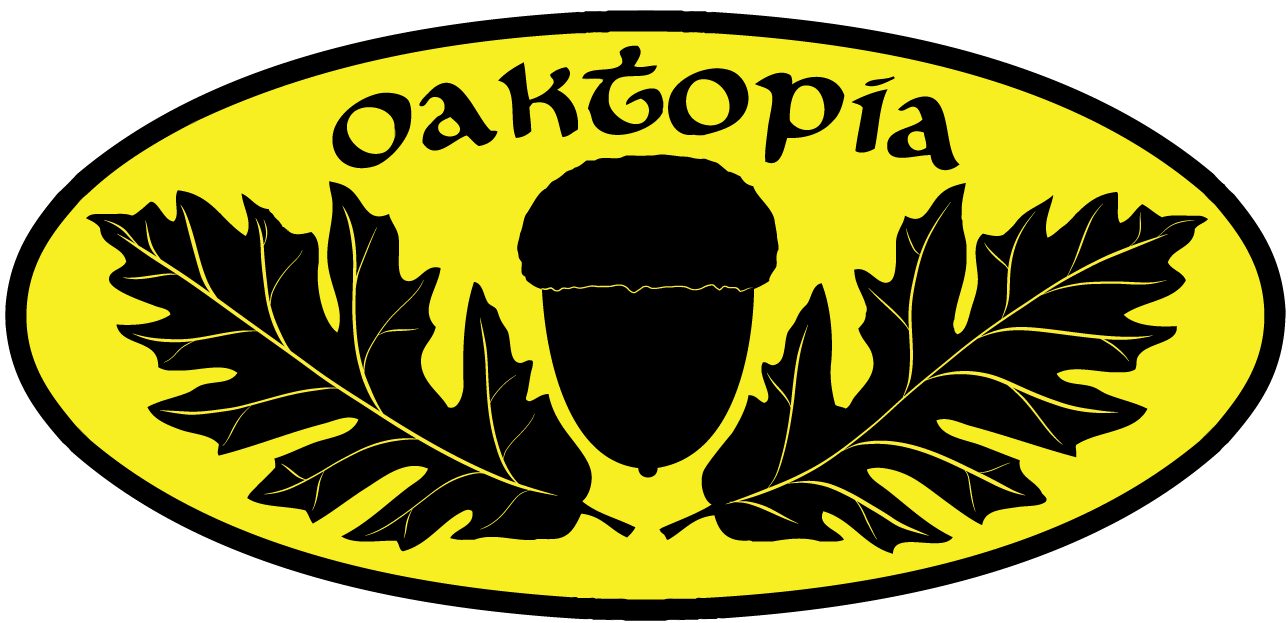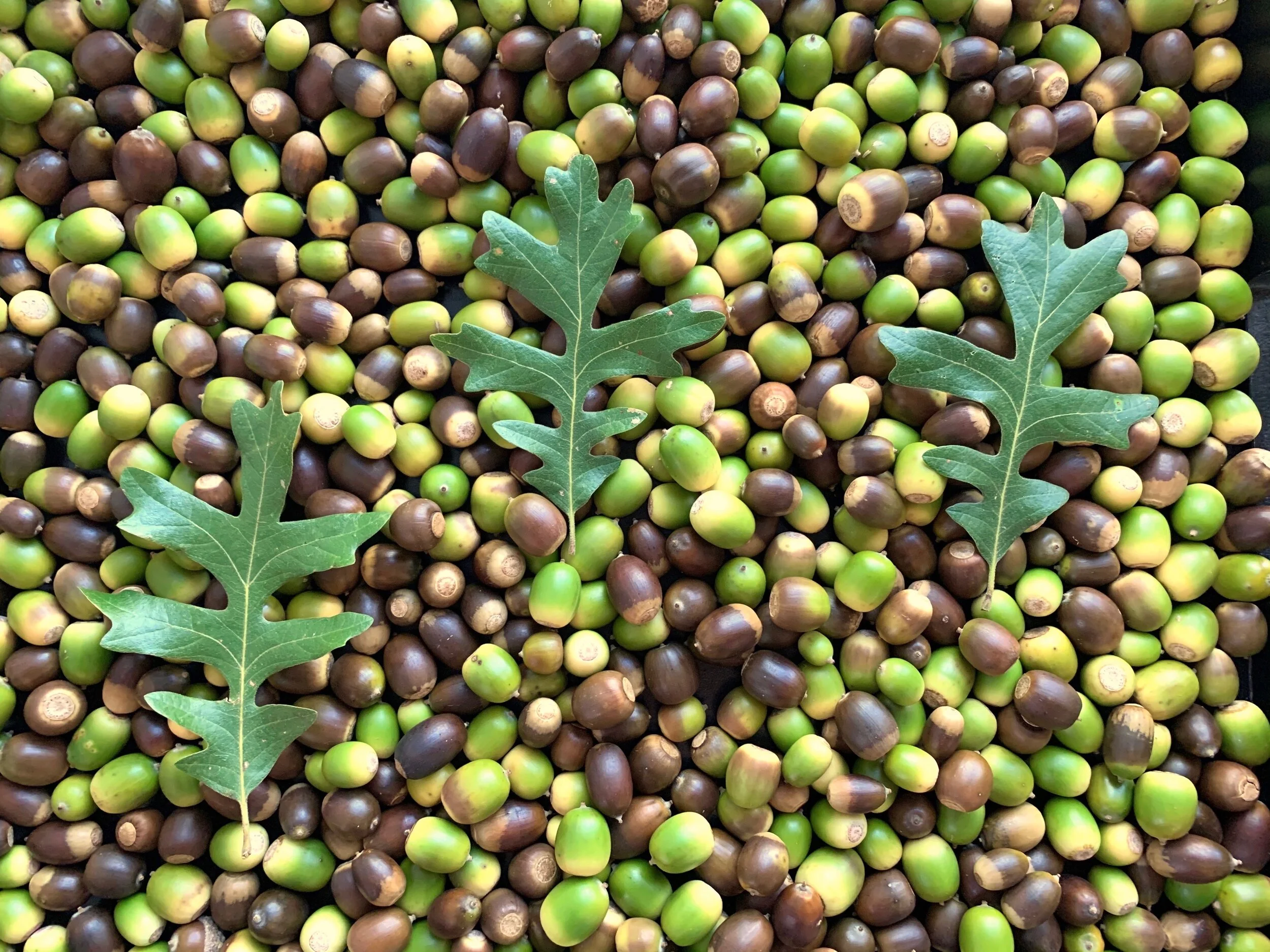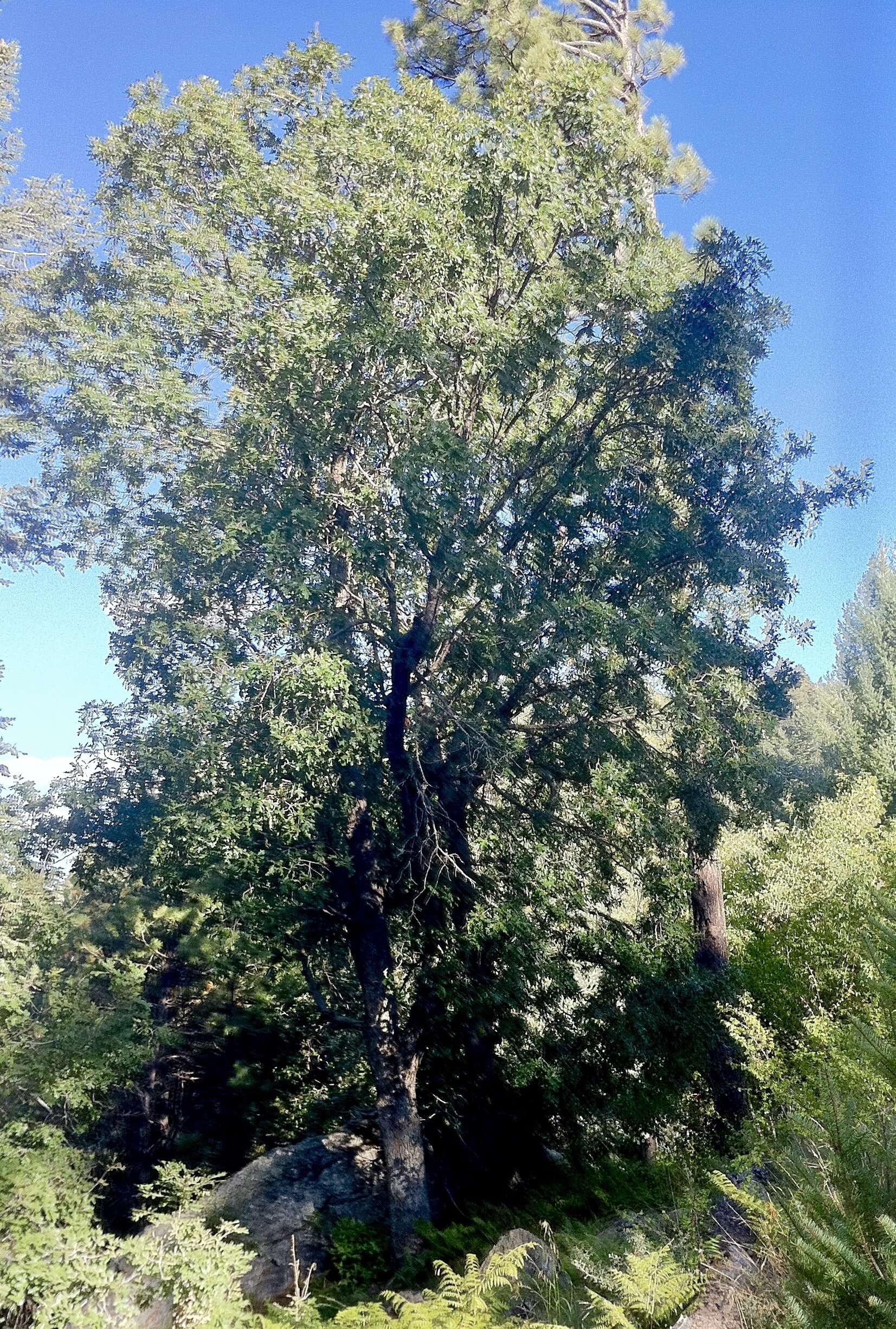Mount Lemmon White Oak
Quercus gambelii (x macrocarpa x rugosa)
If one is afraid of horticultural complexity, oaks are not the plant group to be studying. Oaks are great at diversifying their forms - this trait is one of the key reasons that oaks dominate the ecosystems of the arid midlatitudes all over the world. Oaks almost always exist as swarms of pure species, slightly introgressed individual trees, and outright hybrids.
Sometimes reproductive isolation can lead to tree types which fit within a given species "umbrella" but are strikingly different from most individuals assigned to that particular species. Here we offer just such a tree.
Throughout the Rocky Mountains, Gambel Oak (Quercus gambelii) is common, and is typically a large shrub, or small tree. These Gambel oak types have proven quite susceptible to powdery mildew in coastal California. So we don't typically grow Gambel Oak.
But if you travel to the top of Mount Lemmon in Arizona, and other locations in the Southwestern US, a radically different "flavor" of Gambel oak is present. These are real forest-sized trees, rather than shrubs, with some specimens approaching 80 feet in height. A close look at these trees reveals other traits that are outside the norm for Gambel oak as a species.
Two specific traits stand out on these trees. First, the acorn cups often have fringes along their lower edges, which is a trait typical of bur oak (Quercus macrocarpa), a species closely related to Gambel oak. In fact, in New Mexico and elsewhere, there are clear hybrids between bur oak and Gambel oak. The trees at the top of Mount Lemmon appear to be part of this hybrid grouping, but there is another trait that makes them special, and points to an even more complex parentage.
The acorns of both Gambel oak and bur oak occur directly, or almost directly, on the parent twig. Some acorns have a stem, or peduncle, that connects the acorn cap to the twig, but the peduncles are either suppressed or non-existent in both Gambel oak and bur oak.
But looking at the trees atop Mount Lemmon when they are carrying their acorn crop shows something rather shocking. These trees' acorns all have peduncles, and some of those peduncles are 6 inches or more long! Also, instead of acorns being produced singly, or doubled, some of these trees have a dozen or more acorns attached to a single peduncle! They sometimes look like bunches of grapes, unlike other Gambel oaks.
But there is an oak which grows alongside these big Gambel oak trees, and it does indeed have long peduncles, with up to a dozen acorns attached. This oak is the local form of Netleaf Oak (Quercus rugosa) which used to be called Quercus reticulata, which itself is a small tree or shrub on the Sky Islands of the American Southwest. No scientific record of this hybrid currently exists, but given the essentially infinite range of possible oak hybrids, it isn't surprising to find a type never described, especially from a species without historical or present economic value, growing in out-of-the-way locations.
What makes this particular form of Gambel oak (which is likely worthy of subspecies status) truly interesting and valuable is the fact that no matter what science might decide to call it, we can reproduce it. The seedling offspring of these trees consistently resemble the parent trees.
And the seedlings have proved remarkably resistant to powdery mildew, which is actually a really big deal for potential growing in coastal California, where elevated humidities (created simply by proximity to massive bodies of water) create favorable conditions for powdery mildew. Essentially, if you have fog during the time that susceptible plants are extending their new growth, you may see powdery mildew erupt on the soft and expanding growth, depending on the susceptibility of the individual tree. Hybrid Gambel oaks from Mount Lemmon appear to resist powdery mildew, even during expansion.
Arguably the closest relative to these oaks atop an Arizona Sky Island is none other than the California native Valley Oak (Quercus lobata). Powdery mildew resistance is quite variable among ecotypes of Valley oak, which fits with the genetic variation that has been discovered within Valley oak populations sampled statewide. It appears that our Mount Lemmon Gambel oak has powdery mildew resistance matching, or exceeding, the best of the native Valley oak.
Valley oak makes a poor street tree, due to its great size, and production of large to huge acorns. The Mount Lemmon White oak is a smaller-statured oak than Valley oak, with much smaller acorns, if any are produced at all. Mount Lemmon White oak is highly recommended for further test planting in coastal California cities, primarily from the Bay Area north.














